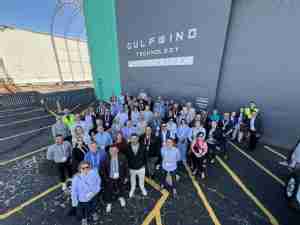The Port of Rotterdam Authority’s Chief Executive Officer, Hans Smits: “As expected, the abundant growth is over, although 12% for containers is still striking. The forecast for this year was and is an increase of about 2%. Taking into account traditional seasonal patterns, and on the basis of confidence on the part of the producers and buyers, that is realistic.”
Dry Bulk
The decrease in incoming trade in iron ore, to 9 million tonnes, is due to the high ore prices. Stocks are therefore being run down. Outgoing trade, by rail and inland shipping, remains at a good level. Demand for coal for energy production is still under pressure from the low price of natural gas, but is recovering thanks to the reduction in the generation of nuclear power. For the time being, the stocks at the terminals are being drawn on. There was a sharp increase in the handling of other dry bulk (minerals, building materials, biomass), to 3.4 million tonnes. Demand from the metal industry continues to rise, supposedly for the production of export goods. We need not assume an increase in demand from the construction sector this year. 2.2 million tonnes of agribulk were shipped in, way up on 2010. This was thanks to, among other things, imports of maize for the new Abengoa bio-ethanol plant. There was also a lot of activity at the buoys in the Waalhaven.
Liquid Bulk
Incoming trade in crude oil was down 340,000 tonnes (two medium-sized tankers), to 24.4 million tonnes. Throughput of mineral oil products fell by 3 million tonnes. This mainly involves fuel oil and gas oil/diesel, the two main product types. These come from Russia, via the Baltic Sea, where the extremely harsh winter seriously obstructed shipping traffic and probably had an influence on exports to Rotterdam. The main thing is the influence of the declining contango (price now lower than later) for middle distillates (gas oil, diesel, kerosene) during the first quarter of 2010. That led to a wave of discharging ships, to both shore tanks and ship-to-ship to other tankers. The relative and absolute fall were taken into account in the forecasts. At the moment, the floating storage in the North Sea is at a normal level. Other liquid bulk (chemical basic products, biofuels, vegetable oils and fats, fruit juices) fell slightly, by over 100,000 tonnes to just under 8 million tonnes. The chemical industry continues to operate at a good level and exports were even up a little. Ethanol throughput remains constant and that for biodiesel continued the slightly downward trend of 2010. The handling of vegetable oil seems comparable to that in 2010, restrained slightly by the high price of palm oil. Companies are therefore not buying more than necessary.
General Cargo
Container throughput continued the rising trend of 2010: up by more than 3 million tonnes to 29.8 million tonnes. Measured in 20-foot units too, the growth was substantial: 10% to 2.9 million TEU. This healthy state of affairs was largely attributable to traffic with Asia. Intra-European traffic is recovering slowly due to the cautious growth of the British economy. The harsh Baltic winter also hampered container traffic with Russia and, due to the high ship’s costs (fuel oil and chartering), a few services abandoned the longer Rotterdam route. Nevertheless, Russia remains a growth market.
Roll on/roll off traffic, which focuses almost completely on England, is also bei









